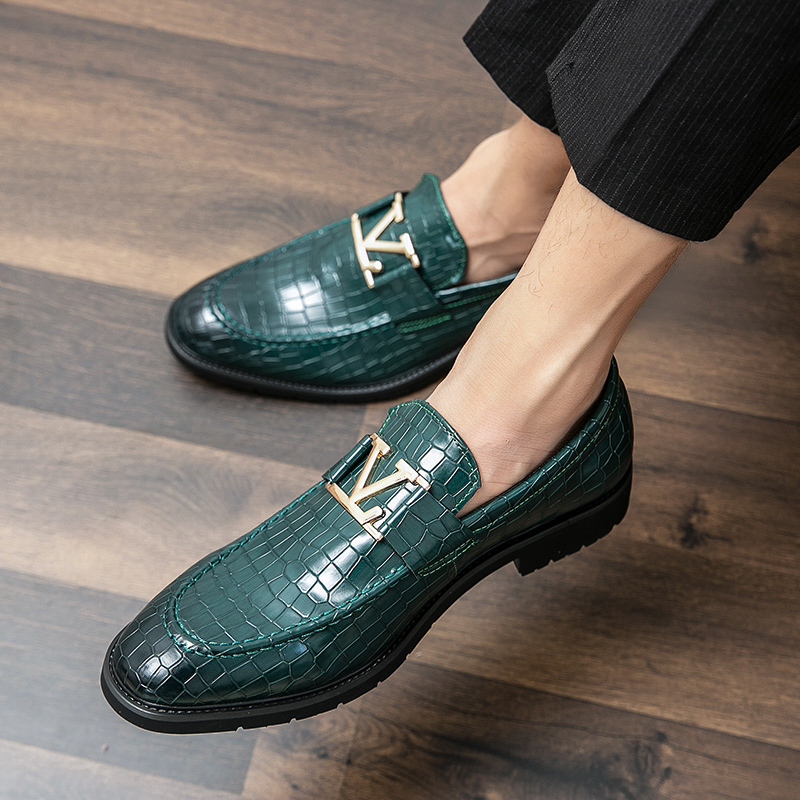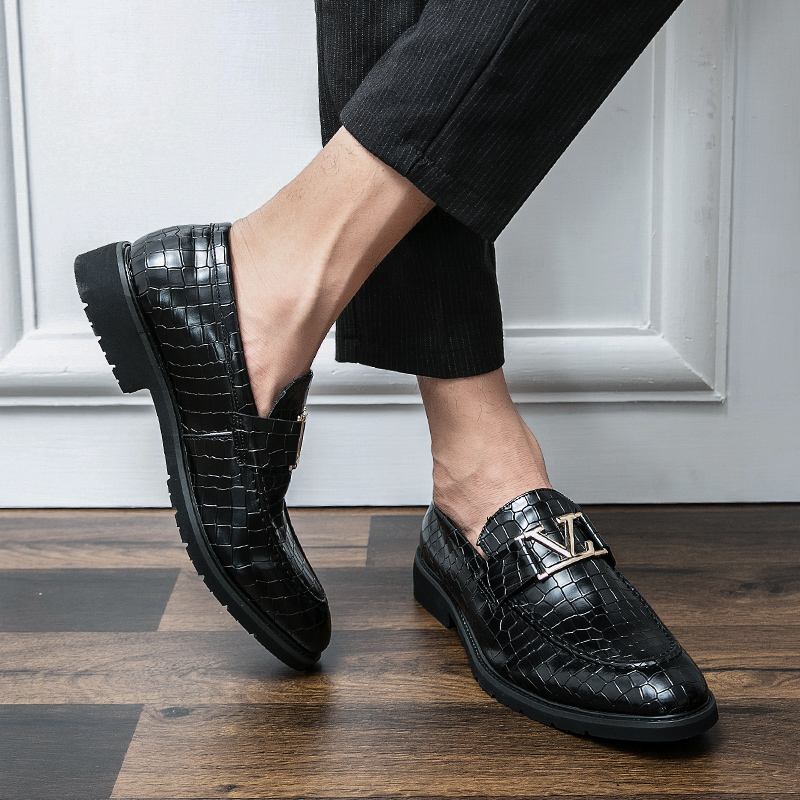Introduction to Leather Shoe Scuffs
Leather shoes add style and durability to your outfit, but they are not immune to getting scuffed. Scuffs on leather shoes occur with normal wear and tear, sometimes taking away from the shoe’s sleek look. These marks come from bumping into various objects or surfaces, which can leave your shoes looking less than perfect. The good news is that most scuffs are fixable. Whether your shoes suffer from light surface scratches or more noticeable marks, you have options to restore them. So, how to fix scuffed leather shoes?

In this guide, we will cover how to identify different types of scuffs on your shoes, what tools and supplies you’ll need, and the best ways to treat light scuffs and more severe scratches. With the right approach, you can bring back the polished look of your leather shoes, making them appear almost as good as new. Stick with us, and learn how to fix scuffed leather shoes effectively, ensuring your favorite pair continues to complement your wardrobe. If the damage is too severe, we’ll also share insights on when it might be time to replace your beloved shoes.
Identifying Types of Scuffs on Leather Shoes
When your leather shoes start showing signs of wear, it’s helpful to know the type of damage you’re dealing with. Scuffs and scratches on leather can range from minor imperfections to more severe issues that demand different approaches to fix.
Material Transfer Scuffs
Material transfer scuffs appear when your shoe rubs against an object, leaving a residue on the surface of the leather. These are common and often seen as black or dark marks. Good news – they’re usually the easiest to tackle! A quick cleaning can often remove these without harming the leather.
Abrasive Scuffs
Abrasive scuffs are more troublesome. They look like the leather has been lightly sanded, sometimes revealing a lighter color underneath. These scuffs slightly damage the leather’s surface but don’t despair. With proper cleaning and some leather conditioner, we can diminish their appearance.
Deeper Scratches
Deeper scratches can be a real headache. These cuts are more profound, potentially reaching into the leather. Such damage is tough to repair and may not completely disappear. But don’t worry, there are ways to make them less visible, giving your shoes renewed life.
By identifying the type and extent of the scuff or scratch, you can select the most appropriate repair method. Knowing what you’re working with is the first step to restoring your leather shoes to their former glory.
Tools and Supplies Needed for Repair
Before starting the restoration of your scuffed leather shoes, gather all essential tools and supplies. Preparing adequately ensures a smoother repair process and increases the likelihood of a successful restoration. Here’s a list of tools and materials you’ll need:
- Soft Cloth: Ideal for cleaning the shoe surface gently without causing additional damage.
- Leather Cleaner: Helps remove stubborn dirt and prepares the leather for conditioning or repair.
- Leather Conditioner: Vital for restoring moisture to the leather, helping to reduce the visibility of scuffs.
- Polish or Dye: Matches the color of your shoes to ensure the repair blends seamlessly with the original leather.
- Repair Kits: May include leather glue, fillers, or dyes specifically designed for fixing deeper scratches.
- Fine Sandpaper: Useful for smoothing out repair filler before applying dye or polish.
- Clean, Dry Cloth: To wipe off excess product and polish the leather after treatment.
Always perform a spot test with any new product on a hidden area of the shoe to ensure it does not cause discoloration. Having these tools on hand will set you up for a successful repair effort, whether dealing with light scuffs or more severe damage.

Effective Methods to Treat Light Scuffs
Treating light scuffs on your leather shoes doesn’t have to be complicated or expensive. Here are some effective methods to consider:
Using a Hair Dryer and Leather Cream
- Warm the Leather: Set the hair dryer to a warm setting and gently blow over the scuffed area. This helps open up the pores of the leather.
- Apply Leather Cream: After warming, massage a small amount of leather cream into the leather. This moisturizes and helps blend the scuff.
- Buff for Shine: Use a soft cloth to polish the area. This restores shine and reduces the appearance of scuffs.
White Vinegar Method
- Apply Vinegar: Dampen a cloth with distilled white vinegar and gently rub the scuffed area. Vinegar helps to lift the scuff.
- Wipe and Dry: Immediately wipe the area with a clean, dry cloth and allow it to fully dry.
- Polish: If needed, apply a small amount of clear shoe polish to enhance the leather’s shine and give additional protection.
Petroleum Jelly Application
- Apply Jelly: Using a clean cloth, apply a small amount of petroleum jelly to the scuff.
- Massage Gently: Rub the jelly in a circular motion, which helps ease the scuff’s visibility.
- Clean Off Excess: After a few hours, remove any excess jelly with a clean cloth. This can help the leather look smooth and uniform.
These methods are easy to carry out and can dramatically reduce the visibility of light scuffs on leather shoes. Always test these methods on an inconspicuous area first to ensure there’s no discoloration or damage to the leather.
Approaches for Fixing Serious Scuffs and Deeper Scratches
Dealing with more serious scuffs and deep scratches on leather shoes requires extra care. Here are some approaches that can help:
Using Leather Glue for Minor Scuffs
- Clean the Area: Begin by using a leather cleaner to prep the surface.
- Apply Glue: Use a minimal amount of leather glue on the scuff.
- Press Down: Gently press it into the leather and clean off any excess.
- Let it Dry: Allow the glue to set completely before moving to the next step.
- Recolor as Needed: Use a leather dye that matches the shoe’s color to blend the repaired area.
This method is best for scuffs where the leather’s surface is rough but not torn.
Repair Kits for Deep Scratches
- Trim Loose Fibers: Cut away any fibers sticking out from the scratch.
- Apply Binder: Put on several coats of a leather binder to stabilize the area.
- Filler and Sand: Add a repair filler, let it dry, and then sand it smooth.
- Color the Repair: Use leather dye to match the repair to the rest of the shoe.
- Seal It: Finish by applying a sealer to protect the repaired section.
Serious scuffs and scratches might need multiple treatments. Always read the instructions that come with repair kits.
For severe damage, a professional repair service might be the best option. There, experts can use special techniques to restore the leather. If the showroom look is crucial, investing in professional services may be worth it. Remember, prompt treatment of scuffs can prevent them from worsening.
Polishing and Final Touches for Restored Shoes
After treating the scuffs and scratches, give your leather shoes the final touches they deserve. Polishing not only enhances the appearance of your shoes but also provides a protective layer. Here’s how to polish and finish your restored leather shoes:

Clean and Prep
Begin with cleaning your shoes one more time. Use a soft cloth to remove any dust or repair residues.
Choose the Right Polish
Select a polish that matches the color of your leather. If unsure, opt for a neutral polish.
Apply Polish Evenly
With a soft cloth or brush, apply the polish in circular motions. Cover the entire shoe for a uniform look.
Let the Polish Set
After applying, let the polish set for a few minutes. Follow the product’s instructions for the best result.
Buff to a Shine
Use a clean, dry cloth to buff the shoes. This will bring out a brilliant shine, making them look new.
Apply a Leather Protector
Optional but recommended for longevity. Use a leather protector spray to guard against future scuffs.
With these steps, the restored look of your leather shoes will impress. Remember, regular care can keep them looking great for years.
When to Replace Rather Than Repair
Sometimes, leather shoes are beyond repair. Here’s when to consider a new pair:
- Deep, Irreparable Damage: If scratches have turned into deep tears, it might be time to shop.
- Worn Out Soles: When soles show significant wear and affect comfort, replacement is best.
- Loss of Structural Support: If your shoes no longer provide support and stability, it’s time for new ones.
Choosing to replace or repair depends on the extent of the damage and your shoes’ overall condition. While good care can extend their life, don’t hold on too long to shoes that no longer serve their purpose. Invest in a new pair that can provide the comfort, support, and style you need.
When to Replace Rather Than Repair
Sometimes, no matter how well we treat our leather shoes, they reach a point where repair isn’t practical. Knowing when to invest in a new pair is just as important as knowing how to fix scuffs. Let’s break down some signs that suggest it’s time for replacement:
Deep, Irreparable Damage
If deep cuts or scratches go beyond the surface, repair might not help. If you see tears or the damage has altered the shoe’s shape, consider new shoes.
Worn Out Soles
Soles bear the brunt of daily wear. If they’re worn down to the point where they affect walking comfort or safety, it’s time for a change.
Loss of Structural Support
Leather shoes that no longer support your feet or have lost their form can’t be fixed. Shoes that slip or don’t fit properly anymore should be replaced.
Repair can do wonders for scuffs and scratches, but when the integrity of the shoe is compromised, it’s wise to replace them. Choose comfort and safety over worn-out favorites. A new pair of leather shoes can give you the support, style, and durability you need.